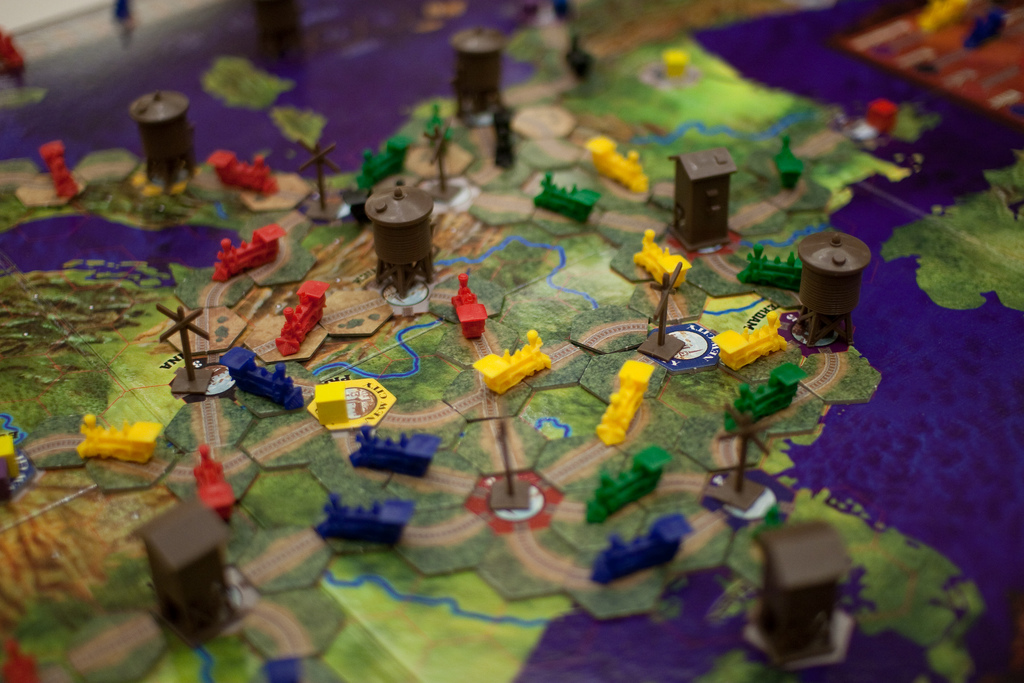
I’ve had the displeasure to attend the odd corporate love-in where a facilitator suggests fancy dress and coloured balls may help in the strategic planning process. Scarred for life, I generally experience reflux every time someone starts suggesting we ‘play a game to get things moving’.
However, of late I have dropped my guard and let others at the agency persuade me to ‘open my mind’. I am not quite ready to spend time with corporate ‘life coaches’ but invested 3 hours on a European train journey to the subject of games. Specifically, I reviewed a text called Gamestorming which, although veering into territory that threatens nausea, is mostly a good summary of well known and emerging techniques for getting results in diverse meeting environments.
In this post, I’ve pulled out the ones I think are most effective. Some I have used successfully before.
The Anti-Problem.
Based on Donna Spencer’s Reverse It approach, this is a good one when you’re running out of ideas to solve a problem. As the name suggests it entails trying to solve the opposite of a problem. For example, if your actual problem is how to reach a customer segment, then you work out ways to ensure that doesn’t happen (and thus identifying all the emotional and functional barriers you need to overcome). You can have up to 20 players split into groups of 3 or 4 people. Allow each group 20 minute stints before asking them to share the results.
The game is designed to help participants break with patterns they are used to habitually applying. The Anti-Problem strikes new directions along which problems can be solved – if not in the session, then later among a team.
Heuristic Ideation Technique.
An effective game, this gets its name from three heuristics (rules of thumb): 1) a new idea can be generated by mixing attributes of an existing idea, 2) a new idea is best understood by describing its 2 essential attributes, and 3) the more different or surprising the combination of the 2 attributes, the more compelling the idea. The game was first envisaged by Edward Tauber in this paper.
The game requires 1 – 10 people, and takes 15-20 minutes. Set up a matrix, like the one below, which frames ideation along 2 attributes. In the example, toy ideas are brainstormed by type of product and type of play. Participants populate the matrix with possible ideas which can act as seeds for new products or services. Absurd combinations can seem more promising upon reflection and further discussion.

Pie Chart Agenda.
We’ve all sat in meetings that spent too long on one theme only to miss other important points and not come to a useful conclusion. The pie chart agenda quickly gets everyone’s agreement on how long to spend on each theme/topic/section of the meeting. It’s a simple exercise in visual thinking. The steps are:
- draw a circle representing the pie of time
- write the objective in the middle of the pie
- work with the group to create wedges of time for each area to be covered (larger wedges for more time)
- leave a decent wedge for reviewing progress and closing the meeting
This is smart game to get people focused on time and expediency with respect to outcomes. I used it last weekend with a Board – and it worked just fine. It is credited to James Macanufo.
Force Field Analysis.
A very useful approach. I have used this many times alone to work through a challenging situation and in a group for planning purposes. If you are running a strategic planning session to work through impacts on a business and its capacity to respond, this is where to start.
You can have up to 30 participants and allow an hour and a half to get through it. As described in the diagram below, begin the session with forces for change on the left hand side and forces against (barriers to) change on the right. Introduce the topic (e.g. ‘future of aged care’) and ask participants to spend 10 minutes writing forces on sticky notes or ready for you to write on the board. Now, write the forces for and against in no particular order. On both sides forces can be external and internal to a business. You may have to do some affinity mapping where forces are the same, similar or can be grouped as one. For example, all forces relating to ‘customer awareness’ or ‘finance’ can be grouped.
Next ask participants to rate the forces from 1 – 5 (where 5 means strong). A quick calculation of scores on either side will give guidance as to the capacity to overcome barriers or influence change. Sometimes, at this stage you may remove weak forces in order to focus people on analysis of major influences. The end goal can be varied, such as whether to implement a change or how the company can cope with external forces of change.
The force field analysis framework was developed by German-American psychologist, Kurt Lewin over 60 years ago.


